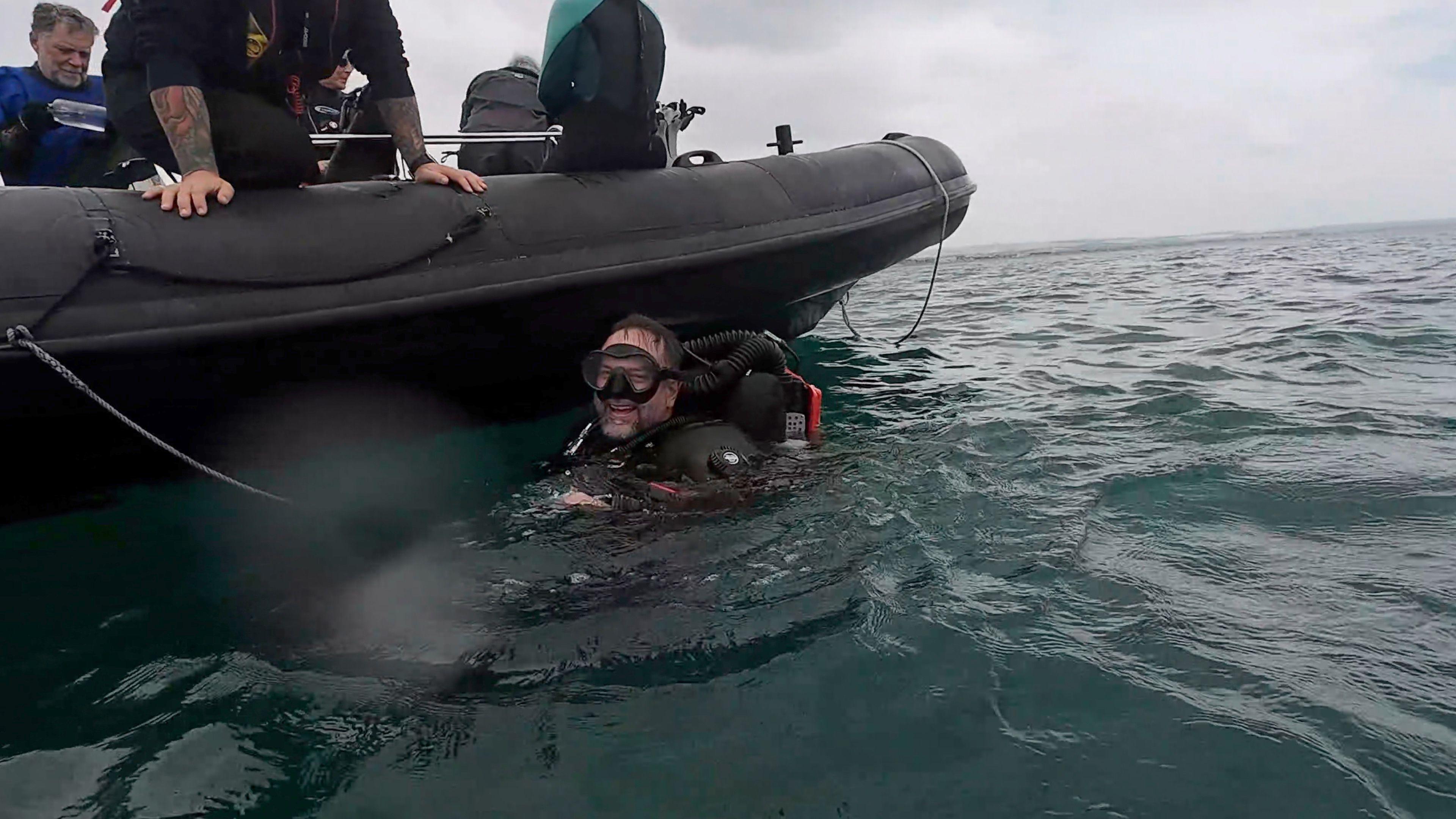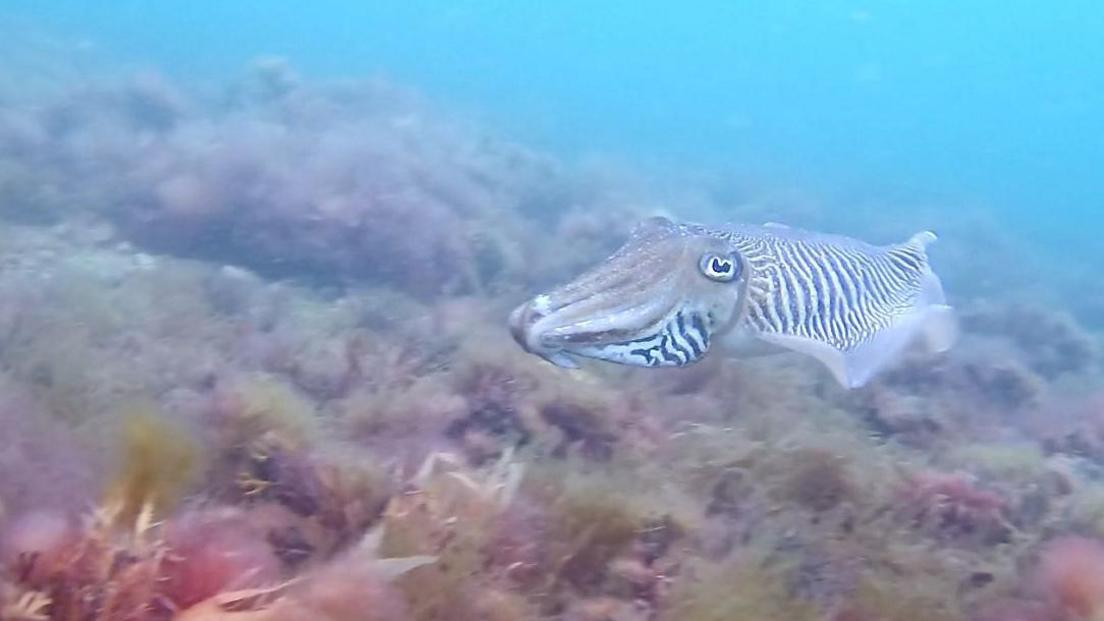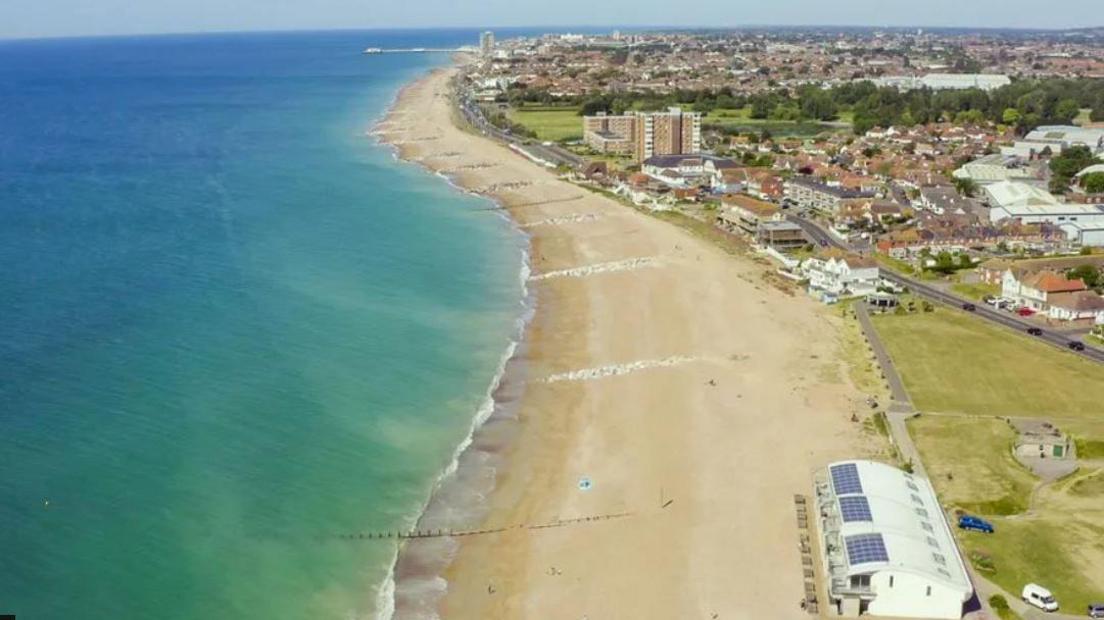Seabed 3.5km dive shows 'thriving' coastline
Long distance dive shows recovering Sussex seas
- Published
A marine researcher has undertaken a 3.5km (2.2 mile) dive to assess the health of the West Sussex coastline.
Dr Raymond Ward, from Queen Mary University of London, set off from Widewater Lagoon in Lancing and swam west along the seabed to look for unusual species and to check the overall health of the ecosystem.
The hope was that increased conservation efforts have allowed the marine environment to recover and flourish.
Dr Ward, who is working alongside the Sussex Bay conservation project, said: "It was quite amazing to see the biodiversity bounce back and there's a wide range of species that are nice for me to see, particularly the rays and sharks."
"Recently we've even seen stingrays which has been a big, important thing for the area because they've not been seen for some time," he added.
Trawling was banned off parts of the Sussex coast, including this area, in 2021.
Conservationists say the ban has been a vital part of getting the larger and rarer species back into the area which in turn encourages people to get involved and engaged with protecting their seas.

The dive highlighted the increase in biodiversity
Dr Aline da Silva Cerqueira, engagement lead with the Sussex Bay project, said: "No conservation measure is going to be relevant and long lasting if you don't have the community backing.
"Sussex Bay project aims to restore 100 miles of the coastline and now with the pictures from this dive up online and social media we can show people what it is that we're trying to protect."
Follow BBC Sussex on Facebook, external, on X, external, and on Instagram, external. Send your story ideas to southeasttoday@bbc.co.uk , external or WhatsApp us on 08081 002250.
Related topics
- Published9 May

- Published14 June 2024
